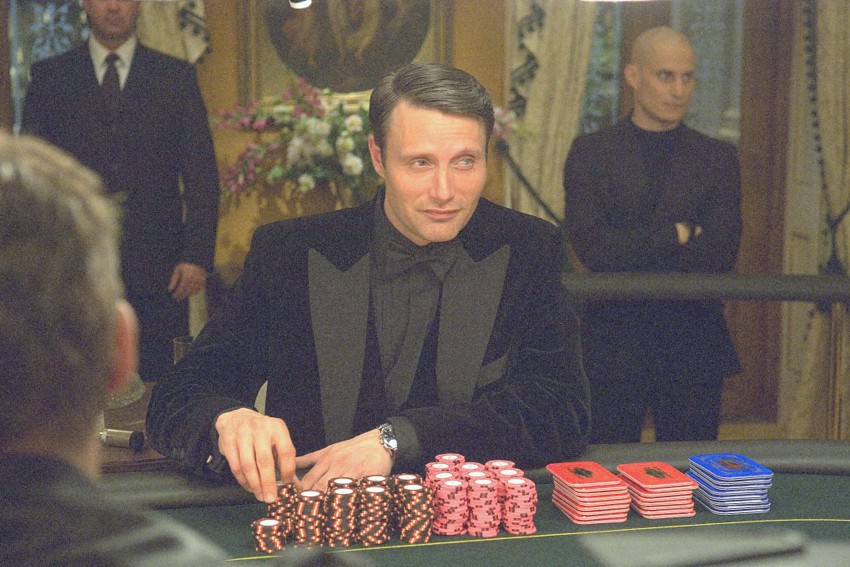
Oladapo Bamidele (January, 29, 2024)—
Mastering the Art of Bluffing or Bluffing is an art steeped in subtlety and cunning. It is not just confined to the card table. It’s a strategic skill we’ve seen masterfully executed by some of cinema’s most memorable villains. But what exactly is bluffing, and how do our favorite on-screen antagonists employ this tactic with such finesse?
The Art of Bluffing: Mastering the Art of Bluffing
At its core, bluffing (mastering the art of bluffing) is about deception – convincing others of a reality that doesn’t exist. This art takes on a compelling form in the nuanced world of poker. It’s not just about tricking opponents into believing you hold a stronger hand than you do; it’s a delicate dance of timing, and strategy.
A successful bluff in poker requires an acute understanding of the game’s dynamics, an ability to read opponents, and the courage to make calculated decisions. It’s about projecting confidence and strength, often in the face of uncertainty.
This tactic, however, isn’t exclusive to the green baize of the poker table. It finds its way into the very fabric of storytelling, particularly in cinema. Just as a poker player might execute a perfectly timed bluff to win a crucial hand, a cinematic villain uses similar deception and strategies to achieve his or her goals.
The parallels between the bluffing techniques in poker and those employed by film antagonists highlight a universal truth: the power of deception is a formidable tool, whether it’s used in the pursuit of a pot of chips or a plot of cinematic intrigue.
Let’s examine some iconic films in which villains raise the stakes with their deceptive prowess. How do these characters’ strategies mirror the art of bluffing in poker, and what can we learn from them?

Hannibal Lecter in The Silence of the Lambs
Hannibal Lecter’s unnerving calm, and intellect make him a master of manipulation. He isn’t mastering the art of bluffing, he wielded it, perfectly. He doesn’t need cards to outwit his opponents; instead, he uses words and silence. His ability to continually mask his true intentions and influence perceptions leads others to underestimate his capabilities.
The Joker in The Dark Knight
The Joker’s unpredictable nature renders him a wild card in the narrative of Gotham City. He thrives in an atmosphere of chaos, weaving through the city with plans wrapped in mystery. This unpredictability keeps his adversaries perpetually off-balance, always unsure of his next move.
Keyser Söze in The Usual Suspects
Keyser Söze is the embodiment of an unseen force. He taught us all how mastering the art of bluffing can be subtley in plain sight. His mere reputation shapes the course of events, influencing the actions and decisions of others. He is a character whose very name evokes a sense of mystery and unseen influence.
Amy Dunne in Gone Girl
Amy Dunne crafts an entire persona in “Gone Girl” that defies expectations. Her skill lies in creating a false narrative so convincingly that it manipulates everyone around her, leading to a series of unforeseen twists and turns in the plot.

Norman Bates in Psycho
Norman Bates in “Psycho” presents a façade that belies his true nature. His apparent innocence and normalcy mislead both the audience and other characters, creating a striking contrast between appearance and reality. He is plagued by the art of bluffing.
Bluffing: A Universal Strategy
Bluffing transcends its roots as a mere tactic and has become a universal strategy, particularly prevalent among some of the film’s most intriguing villains. Their capacity to deceive and manipulate not only defines their characters but also drives their narratives, making them both compelling and, at times, frighteningly effective.
At its essence, bluffing is about controlling the narrative and influencing perception. It’s a psychological game where the unseen and unsaid carry immense weight. When watching a movie villain weave their web of deceit, it’s fascinating to consider how they use this strategy to achieve their ends.
So, here’s a thought-provoking question for you, the reader: Can you think of other movie villains who have harnessed the power of bluffing to their advantage? How do their tactics of deception and misdirection compare to those typically seen in strategic scenarios? The dance of deception is not just limited to the flicker of the silver screen. It’s a thread that runs through many forms of narrative and conflict, where the ability to conceal true intentions and lead others on a chosen path can be crucial. When executed with precision and artistry, it’s a skill that can sway the course of events, making for some of cinema’s most unforgettable and dramatic moments.
Did this press release inform you? Would you like to comment on Mastering the Art of Bluffing: Lessons from Iconic Movie Villains If you do, we would respond. Do let us know your thoughts if you have any suggestions. So hit us up on Facebook, Instagram! or Twitter.
INDIE ACTIVITIES
Apple TV picks up “Dismissed” by Aysha Scott After it Hit a Million Views
Single mother entrepreneur from South-East London, built up an empire from scratch.
MOEDER Oscar® Qualified Drama Based on MH17 Airline Disaster
OSCAR® Qualified MOEDER tells a story tragedy on the Ukrainian-Russian border
Nate & John Oscar® qualified Animation Short Directed by Jumai Yusuf
NATE & JOHN heartwarming animation short qualifies for the 97th Academy® Awards
Dreama Team by Chad Weber & Steve Vanderheide Acquired by Freestyle for November Release
Feature Documentary Dreama Walton Sets Digital Debut for Global VOD Platforms and on DVD on Nov 1, 2024
LGBTQ+ Film, “Muscat” by Philippe Grenier Qualified the Oscars®
Muscat is an audacious exploration of a young boy confronted with the discovery of his identity






